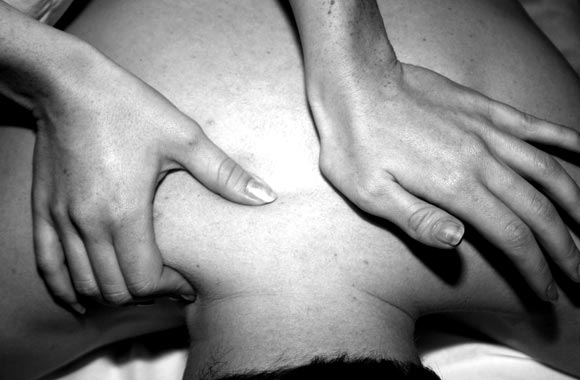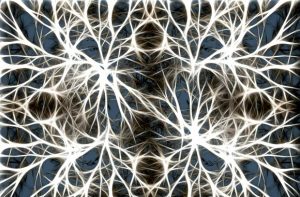Pain Disorders
Pain is a protective phenomenon and it occurs whenever any tissue is being damaged and it enables a person to react to remove the pain stimuli.
Types
There are two major types of pain.
Fast pain
This is the pain that is felt within about 0.1 seconds after a pain stimulus application. It is described as sharp pain, acute pain, pricking pain, and electric pain. It is not felt in the deeper-most tissues f the body.
Slow pain
This pain begins only after 1 second or more and then increases slowly over time. It is described by many names as slow-burning pain, throbbing pain, aching pain, nauseous pain, and chronic type pain. Slow pain is usually associated with tissue destruction. It can lead to unbearable suffering of prolonged nature and it tends to occur in the skin and almost any deep tissue or organ.
Pain disorders are chronic types of pain that are due to either some disease or psychological stress. These are in various forms. Some of them are listed below.
Headaches: This is also chronic if a person is suffering from a migraine, tension, sinus, and cluster headache. They can either be unilateral or bilateral. They disturb the person’s daily life activities.
Cancer pain: Cancers of various types lead to painful crises e.g. leukemia and other blood disorders lead to bone pain of intense intensity.
Fibromyalgia pain: This leads to fatigue and pain whose cause is unknown. This pain arises from muscles, joints, tendons, bursa, and ligaments.
Neuralgia: It is the most excruciating type of pain due to nerve involvement in the face. It makes the patient life worse.
Angina: It is chest pain that occurs on exertion due to the poor blood supply to the heart.
Pain by Shingles: This is also a very painful condition due to the herpes virus after its relapse in immunocompromised people.
Arthritis: This is the inflammation of joints that if chronic can lead to severe joint pain and markedly affects a patient’s life.
Psychological pains: Some people under stress or depression feel chronic pain that has no pathological basis to explain.
Back pain: Low back pain is also a chronic type due to arthritis, degeneration, or other pathology of the vertebras and muscles.
Chronic Fatigue Syndrome: This is a chronicity of feeling of being fatigued and lethargic. It affects the daily life routine of people as well.
Sexual pain: There are sexual pain disorders as well in which a person feels pain while doing a sexual act. It includes
- Vaginismus: It is the involuntary contraction of the vaginal muscles which occurs recurrently and interferes with vaginal penetration.
- Dyspareunia: It occurs when an attempt is made to penetrate during a sexual act. It is also a chronic and recurrent type.
Carpal Tunnel Syndrome: It causes pain of pins and needles in the hand due to median nerve compression.
Diagnosis
A complete history of the patient is required for the best diagnosis. An emotional and personal history should be taken into detail. Many tests and MRI or CT scans should be done.
Treatment*
Make the patient calm and work out with his emotions and feelings to make him tension free. Cognitive-behavioral therapy seems helpful along with certain medications. Firstly remove the cause which is causing the pain.
In case of pain due to a psychological problem, the use of antidepressants, stress-reducing exercises, and physical therapy is beneficial.

Carpal Tunnel Syndrome
The carpal tunnel, formed by the concave anterior surface of the carpal bones and closed by the flexor retinaculum is tightly packed with long flexor tendons of the fingers along their surrounding synovial sheaths and the median nerve.
Anatomical Location
The long flexor tendons to the fingers and thumbs pass through the tunnel and are accompanied by the median nerve. The four separate tendons of the flexor digitorum superficialis muscles are arranged in a way that they give rise to anterior and posterior rows, those to the middle, and ring fingers which are present in front of those to the index and little fingers. At the lower border of the flexor retinaculum, the four tendons diverge and get arranged on the same plan. The median nerve is passed between the flexor retinaculum in a restricted space between the floor digitorum superficialis and the flexor carpi radialis.
Carpal Tunnel Syndrome is actually due to compression of the median nerve within the tunnel. This nerve supplies to the fingers.
Signs and Symptoms
The syndrome consists of burning pain or pins or needles along with the distribution of the median nerve to the lateral three and a half fingers. It also causes weakness of the thenar muscles. The grip becomes weak and difficult to hold anything, pain radiates to the elbow, complaints of numbness and tingling in the fingers and thumb, and movement problems in the fingers. But no parenthesis occurs of the thenar eminence because this part of the skin is supplied by the palmar cutaneous branch of the median nerve which passes superficially to the flexor retinaculum.
Causes
The exact cause of the compression is difficult to determine, but there is seen a thickening of synovial sheaths of the flexors tendons or arthritic changes in the carpal bones which have led to this syndrome. Other reasons for the syndrome are internal factors that can exert pressure on the median nerve as well as some external factors like tumors or other diseases. It has also been seen that due to continuous and repetitive movements of hands and wrist, this carpal tunnel syndrome ensues. Typing on the keyboard is also thought to be one of the commonest causes.
Other causes include hypothyroidism, diabetes, menopause, alcoholism, bone fracture, rheumatoid arthritis, acromegaly, and systemic lupus erythematosus. Certain viruses are also linked to causing this disease. A person who is obese also has a risk of developing this disease.
Diagnosis
It is based on a complete history and physical examination. There are many orthopedic tests like Tinel’s sign or Phalen’s test to check this syndrome physically. Other includes x-rays, nerve conduction velocity, etc.
Treatment*
It can be treated by the use of non-steroidal anti-inflammatory drugs like ibuprofen, mefenamic acid, etc. Corticosteroids are also helpful. For this condition use of hot and cold compression is also helpful. This condition is dramatically relieved by decompressing the tunnel by making a longitudinal incision through the flexor retinaculum. Other includes avoidance of the work which leads to this condition.
This disease has an overall good prognosis.

Chronic Fatigue Syndrome
Chronic fatigue syndrome is a disorder characterized by fatigue for a prolonged-time period of at least six months. It is such a type of fatigue that is not after some work or due to some disease. It is also not relieved by taking rest. It persists throughout the day.
Usually, a person feels fatigued when he is ill or has some disease like any infectious or inflammatory disease. When these diseases settle down, fatigue also sets off and a person again starts feeling active and fresh. But in the case of chronic fatigue syndrome, a person remains in constant fatigue without having any medical problem.
Causes
Although the exact cause is still not unknown, it is thought to be caused by inflammation within the nervous system due to some immune reactions in the nervous system. This syndrome is also linked with some viral infections such as human herpesvirus 6 or Epstein bar virus. Others include bacterial infections and oxidative stress which cause damage to tissues and result in this problem. The abnormalities of the hypothalamic-pituitary-adrenal axis are also thought to produce this chronic type of fatigue.
Other causes are thought to be personal stress, tensions, age, and environmental or genetic factors.
Signs and Symptoms
People suffering from this disease usually experience symptoms of persistent fatigue which make a person unable to do anything or any activity, produce sluggishness, lethargy, sore throat, headache, problem in sleep, muscles irritation and pain, joint pain, and the patient remains unrefreshed despite full and proper sleep, confusion and irritation also occur. There are signs of lymph node tenderness as well as mild fever. A patient may complain of night sweats, chest pain, and dysfunction of bowel habits. Psychological problems may also arise.
Diagnosis
There is no perfect method to diagnose this disease. Various tests and CT scans or MRIs are also not helpful. These can just be used to exclude other diseases which can cause fatigue and pain. This disease is not easily diagnosed. A thorough checkup and complete history are required.
Treatment*
There is no exact treatment for this disease that will provide a cure. Some drugs provide relief from certain symptoms of sleep disorder, muscle pain, or depression. These drugs only work to reduce these symptoms, they cannot eradicate them. Certain therapies help get rid of this disease. Immunosuppressive agents are also beneficial in treating this disease. These include graded exercise therapy and cognitive behavioral therapy.
Graded Exercise Therapy: It is a type of physical therapy that aims to reduce fatigue and it has been found successful in reducing fatigue in many people with this disease.
Cognitive Behavioral Therapy: It is a psychological therapy that enables the patient to learn about his disease and get completely informed of its signs and symptoms. Then this therapy aims to reduce these symptoms and makes a patient’s life better so that he may carry on his routine normally.
Prognosis: This is not so good. Relief from certain symptoms can occur after treatment. But this disease is not cured completely.

Chronic Pain
Pain is a feeling that we feel due to some injury or trauma. It may be burning, sharp, pricking, or slow aching pain. It is, in fact, a helpful feeling by which a person becomes aware of the pathology which is going on within his body so a diagnosis can be made. It is a complex perception and it differs among different individuals.
Classification
Somatic Pain: The sense organs for somatic pain are the naked nerve ending and initial pain is sharp which is transmitted by fast conducting fibers and the more prolonged burning pain travels in the slow-conducting nerve fibers. Somatic pain is also given another name parietal pain which occurs in the parietal surfaces e.g. parietal peritoneum, pleura, or pericardium.
Visceral Pain: In the case of visceral, there are special receptors, chemoreceptors, baroreceptors, osmoreceptors as well as stretch receptors that are sensitive to a variety of stimuli. For examples, chemical stimuli, ischemia spasm of the hollow viscus, stretching of connective tissues surrounding or within the viscera, and excess distention of any hollow viscera. Essentially all the visceral pain originates in the chest and abdomen and is a chronic aching suffering type of pain. The visceral pains are poorly localized and are often associated with nausea, vomiting, sweating, and tachycardia. It can be referred to different sites.
Pain can be acute or it can be chronic.
Acute pain: This pain occurs after some injury or acute trauma due to infection or inflammation. It is a mostly self-limiting type of pain. Acute pain remains confined to the time of injury and its severity. In some instances, it may become chronic as well.
Chronic pain: Chronic pain occurs intermittently with pain-free intervals as well. It occurs mostly in fibromyalgia, inflammatory bowel disease, chronic fatigue syndrome, endometriosis, or any musculoskeletal disease conditions. The chronic type of pain has shown some resistance to medical treatment so that’s why it persists for a longer time.
Causes of Chronic Pain
The continuously stimulating pain-carrying sensory receptors’ transmission to the dorsal horn may result in a wind-up phenomenon that produces pathological changes that decrease the threshold for pain signals that are to be transmitted. It may also generate sensory pain receptors to respond to pain signals. Non-nociceptive nerve fibers are also able to produce and transmit pain signals. In chronic pain, this process is difficult to stop or reverse once it has been established.
Symptoms
The main symptom is the pain that comes and goes but always remains to re-occur. It may be mild to moderate or severe. There is also a feeling of tightness and stiffness in the body. Pain is not only a symptom but it is accompanied by a variety of other complaints. These are fatigue, decrease immunity, sleep disorders, depression, sadness, fear, or decreased concentration in the work.
Diagnosis
It is made after taking a complete history and physical examination. Some tests if done are better. MRI shows that different areas of the brain even at rest are continually processing pains.
Treatment*
These days’ new techniques have been used to treat chronic pain with success. These include acupuncture and electrical stimulation of the skin. The anticipation of the relief of pain is thought to stimulate the release of endorphins, which inhibit the normal pain pathway so the patient does not feel pain.

Fibromyalgia
Fibromyalgia is a disease in which a patient feels pain in different parts of the body e.g. joints, muscles, tendons, and soft tissues as well for a long time. So it is thought to be a musculoskeletal and neurological problem. It is characterized by tender points; where touching pain is felt. It has also been associated with feelings of sadness, sleep disorders, headaches, and fatigue. It is one of the forms of pain disorder.
Causes
There has been no known cause of this disease. No sign of inflammation has been found in those areas where a patient feels pain. No other pathology has been seen. So this disease does not lead to any deformity of bones and joints. No damage to any part of the body is being reported so far due to this disease.
Scientists have presented many theories regarding its etiology. They say that it is genetically linked and also runs in families. They also say that stress is one of its causative agents too. Certain stress conditions like irritable bowel disease, posttraumatic stress disorders, and fatigue of chronic type may contribute to the development of this pain disorder.
Other theories say that deficiency of growth hormone may also lead to fibromyalgia. Some say that decreased amounts of neurotransmitters like dopamine and serotonin are also involved in causing this disease. Their decreased levels lead to poor natural analgesic effects. Trauma and other mood disorders are also thought to be their causes.
Signs and Symptoms
This disease is characterized by a chronic type of pain symptoms. A patient may feel:
- Muscle pains and spasms
- Nerve pain
- Poor concentration
- Sleep problems
- Weakness and fatigue in the body
- Pain in other parts of the body like in neck, shoulders, arm, trunk, back, buttock, and legs
- Memory disorders
- Depression
- Anxiety
- Low heart rate
- Palpitations in some patients
- Headaches
- Poor bowel habits
Lab Diagnosis
An exact test for its diagnosis is not available. It is done based on history and certain tests. These tests usually show different hormonal level alterations as well as decreased levels of neurotransmitters. Hormones found to be deficient in this disease are growth hormone and cortisol. The hormones which are increased include prolactin. The hormones whose effects are reduced in this disease include thyroid gland hormones. On brain MRI there has been seen a poor supply of blood to the pontine, basal ganglia, and thalamus. There seems hyperactivity in different regions of the brain. There have also seen decreased opioid receptors in the ventral striatum and cingulate gyrus in fibromyalgia. Other findings include an increased level of substance P in the cerebrospinal fluid. This substance P is the pain sensory receptor. These findings along with the history of long-term pain and the presence of tender points allow a doctor to make a diagnosis of fibromyalgia.
Treatment*
It is based on removing the pain complaints of a patient and then providing help in coping with this disease. The use of antidepressants is helpful one such is duloxetine, which also provides relief from pain. Some analgesics, opioids, antiepileptics, and dopamine agonists also provide relief from chronic and severe pains. Behavioral therapy should be done along with medication in such patients so that they may spend a quality life.

Arthritis
Definition: “Arthritis is the condition in which there is inflammation of the joints”
Joints connect the bone with another bone and are constructed to provide both movement and mechanical support. There are various types of joints in our body and their inflammation is one of the common pathologies encountered for them. The arthritis is associated with chronic pain in them which is constant and localized to the particular joint affected.
Forms
There are numerous forms in which arthritis is presented. These include
Osteoarthritis
It is a degenerative disease of joints and is the most common disabling condition in developed countries. Here there is a progressive erosion of articular cartilage.
It appears insidiously, without apparent initiating cause, as in the aging process. This type is called primary osteoarthritis.
Secondary arthritis results in some disease settings like diabetes, ochronosis, marked obesity or congenital developmental deformity, etc.
Clinical Course: The disease’s characteristic symptoms include deep achy pain that gets worse when in motion, there is morning stiffness, crepitus, and limitation of movement.
Rheumatoid arthritis
It is a chronic systemic inflammatory disorder that may affect many tissues and organs but principally attacks joints. Here autoimmunity plays a vital role in causing this disease along with its progression.
Signs and Symptoms: Initially, there is a feeling of fatigue, malaise, fever, and generalized musculoskeletal pain, after which joints become clearly involved. Symptoms usually develop in the small bones of hands and feet followed by involvement of the wrist, ankles, elbows, and knee, the spine may be involved later. The joints are warm, swollen, painful, and stiff.
Juvenile Rheumatoid Arthritis
It begins before age 16. Here arthritis must be present for six months. Oligoarthritis is more common with this type of arthritis, large joints are affected and systemic-onset is more frequent. In this type rheumatoid nodules and rheumatoid factors are not present. This disease targets joints of the wrists, elbows, knees, and ankles.
Reactive Arthritis
It is the non-infectious arthritis of the appendicular skeleton that occurs within one month of a primary infection localized elsewhere in the body. It is thought to be caused by the autoimmune reaction initiated by the prior infection
Signs and symptoms: Arthritic symptoms usually develop here with joint stiffness and low back pain.
Ankylosing spondyloarthritis
This is the chronic inflammatory axial joint disease involving the sacroiliac joint. This disease may result in spinal immobility and it involves peripheral joints of the shoulders, knees, and hips.
Psoriatic Arthritis
It occurs between the ages of 30 and 50 years and affects those people joins which are suffering from psoriasis. It may involve eye-causing iritis and conjunctivitis along with joint inflammation of the knees, hips, and wrist.
Infectious Arthritis
All types of microorganisms can lodge in the joints during hematogenous spread. They also affect the articular cartilage by direct inoculation or focus of osteomyelitis. It is one of the serious forms as it may cause rapid destruction of the joint and produce permanent deformities.
Gouty Arthritis
Gout is due to hyperuricemia and is marked by acute arthritis attacks initiated by the crystallization of urates within the joints.
Lab Diagnose
In this disease blood tests and x-rays provide much help in determining the disease and its severity.
Treatment*
The treatment aims to reduce pain, slow down the process, improve the disability and stop further destruction of a joint so that patient may be able to perform his routine work. Other treatment usually involves the use of non-steroidal anti-inflammatory drugs. Severe cases are treated with chemotherapeutic agents. In the case of infectious arthritis, antibiotics or other antimicrobial agents are added to the treatment regime. Gouty arthritis is controlled by uricosuric, colchicine, or allopurinol.

Migraine Headaches
A migraine headache is a special type of headache that is thought to result from an abnormal vascular phenomenon within the brain.
Types
There are two main types of this headache, namely
A classic migraine: Here headache occurs after neurologic symptoms called auras, which can be visual, sensory, or cause speech or motor disturbance.
A common migraine: Here headache occurs without being preceded by an aura. It is a unilateral and pulsating headache and lasts for 2 to 72 hours. Approximately 85% of patients with migraine do not have an aura.
For both types of migraines, women are threefold more likely than men to experience either type of these headache.
Prodromal Phase or Aura
The classic type of headache often begins with various prodromal sensations and symptoms such as a feeling of nausea and loss of vision, especially in the part of the field of vision. There may be a visual aura and many other types of sensory hallucinations. These symptoms of the prodromal phase begin 40 minutes to 1 hour before the beginning of a headache. It occurs in 15 percent of patients. These must be explained by a migraine.
Causes
There have been many theories about the causes of a migraine headaches but still, the exact cause is unknown.
One theory is that prolonged emotions or tensions cause reflex vasospasm in some of the arteries of the head also including arteries that supply the brain. This vasospasm produces ischemia in the part of the brain as constricted arteries supply poor blood to the brain. This is also thought to be responsible for producing prodromal symptoms. Then as a result of the intense ischemia, vascular walls undergo such a change, perhaps due to exhaustion of the smooth muscle contraction that blood vessels become flaccid and become incapable of maintaining vascular tone for 24 to 48 hours. They become dilated due to blood pressure in them, and then they pulsate intensely it is said that excessive stretching of the walls of the arteries also including some arteries of the extracranial site e.g. the temporal arteries causes the actual pain of a migraine headache.
Other theories regarding this headache include spreading cortical depression, psychological abnormalities, and vasospasm caused by excess local potassium in the cerebral extracellular fluid.
One theory tells about disorders in the serotonergic pathways leading to this headache.
This migraine headache is usually on one side and is of throbbing in nature. The pain onset is gradual and remains at a peak for some time and then subsides. It mostly lasts for 3 to 70 hours in some individuals and in the case of children mostly from 1 to 48 hours.
Treatment*
Many drugs have been available in the markets which provide relief from a headache. Acute treatments can be divided into a specific migraine or a non-specific migraine.
Specific Migraine treatment: Here therapy includes triptans use and dihydroergotamine. These are serotonin receptor agonists.
Non-specific Migraine treatment: This treatment is to relieve the patient from fever and vomiting. So here nonsteroidal anti-inflammatory drugs and antiemetics such as prochlorperazine are used. Opioids are reserved as rescue medication for a severe migraine not responding to other drugs.
Prophylaxis
Therapy to prevent a migraine headache is indicated if the attacks occur two or more times a month and if headaches are pulsating in nature or severe or complicated by neurologic signs. Propranolol is the drug of choice but other beta-blockers particularly nadolol are also effective.




